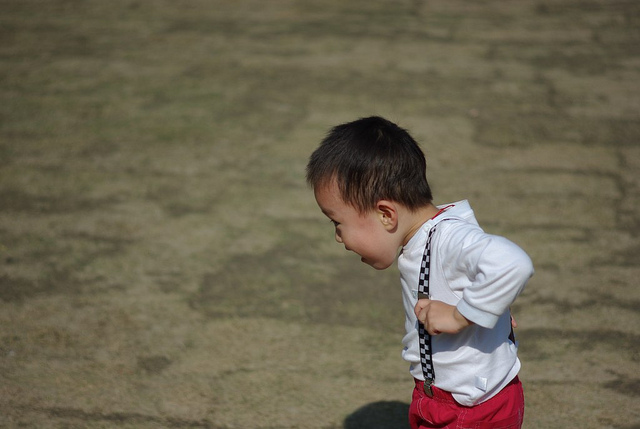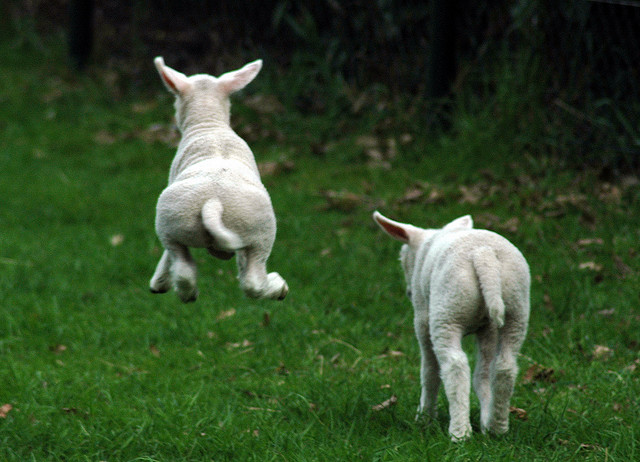This first ran May 17, 2013. The running kids are grown and going to college or have graduated from it. So they’re not running any more, not in that way that looks like they’re powered by lighter-than-air energy sources. That’s fine, because another generation of littles just ran across the yard, running for no good reason, putting more energy into running than running needs. They are, as were the now-grown kids, astonishingly beautiful. As are the juiced-up robins.
Outside the window, the neighborhood kids are running again. They’re about 12 years old, a boy and a girl and the girl’s little sister, about 8, and they’re racing around the court, up the street, along the alley, through a yard, and back onto the court, altogether maybe a full block, around and around. They’re going flat-out on long skinny legs, hair flying and completely silent. Sometimes they’re playing tag, but mostly they’re just running, they hardly touch earth, they’re all but airborne. What is it about spring?
Horses do the same thing. I grew up next to a horse farm, and in the spring the horses would run for no reason whatever, flat-out and manes flying like the kids, across the pasture, wheel, turn, and back again. They sometimes ran in pairs, right next to each other, synchronous at top speed. Meanwhile in our own pasture the lambs were springing around stiff-legged like little pogo sticks, boing, boing.
I don’t think all this energy is going toward mating, though Lord knows that’s roaring around too. Last night I walked into one of those floating columns of gnats which my stepdaughter-the-entomologist tells me are a mating structure with the bugs at the top being the alphas doing the most sex. And I won’t mention the robins again, except to say that all summer they sit around frumpily in trees and cheerup, but right now they’re in love and flying like red-bellied bats out of hell at eye level.
So the springtime bugs and birds are pure sex and we’re no exception. Jessa assures me (private communication) (and backed up with research) that men’s reproductive hormones peak in June, as do contraceptive sales and sexually transmitted diseases. Other animals have annual peaks in hormones too, but the animals in different places have peaks at different times — yaks, for instance, have testosterone concentrations that dip in the spring. I’m not going to dwell on how researchers measured hormones here, except that in men they took blood and in yaks they were more intrusive. The general idea is that lengthening or shortening periods of more or less daylight – called photoperiods — trigger the pineal gland in the brain to release chemicals which in turn trigger the reproductive system.
But I’m more interested in the springtime activity level, the jumping and running and flying. And sure enough, changes in photoperiod also correlate with the activity level, energy expenditure, and feeding behavior of Siberian hamsters, and therefore of course how fat the hamsters are. And in humans, changes in photoperiod affect — along with a whole litany of awful things (“depression, stroke, suicide, sudden infant death, cardiac arrest, infections, homicides, battering of women, rape, hip fractures among the newborn, multiple sclerosis, intracerebral hemorrhage”) (a list that long and various has got to be meaningless) — the same feeding behavior and energy expenditure. The researchers can’t explain the underlying mechanism for all this and admit to being surprised.
In the absence of convincing causes, I’m free to make stuff up. Open the door to the chicken house in spring and the chickens come whizzing out, flapping their useless wings, ripping out new grasses, and scratching up busy clouds of dust. I think all the running and scratching isn’t just photoperiods and chemicals; it’s also something else. It’s the embodiment, the incorporation of whatever — regardless of certain mortality, morbidity, and darkness — keeps you jumping. It’s juice incarnate. The winter’s over, it’s spring again, boing, boing.
_________

